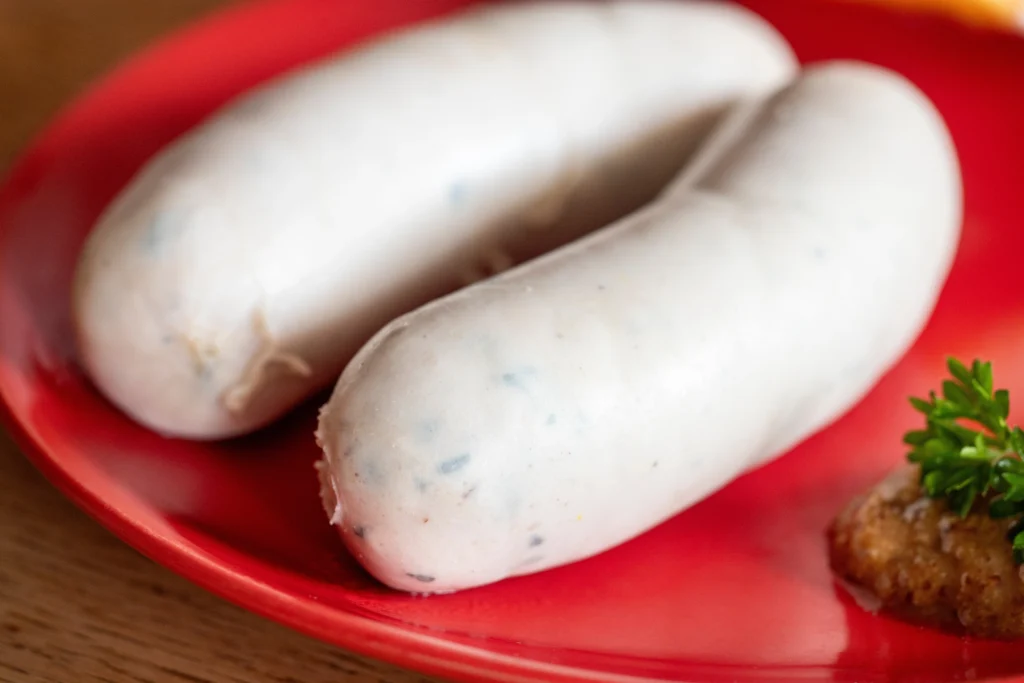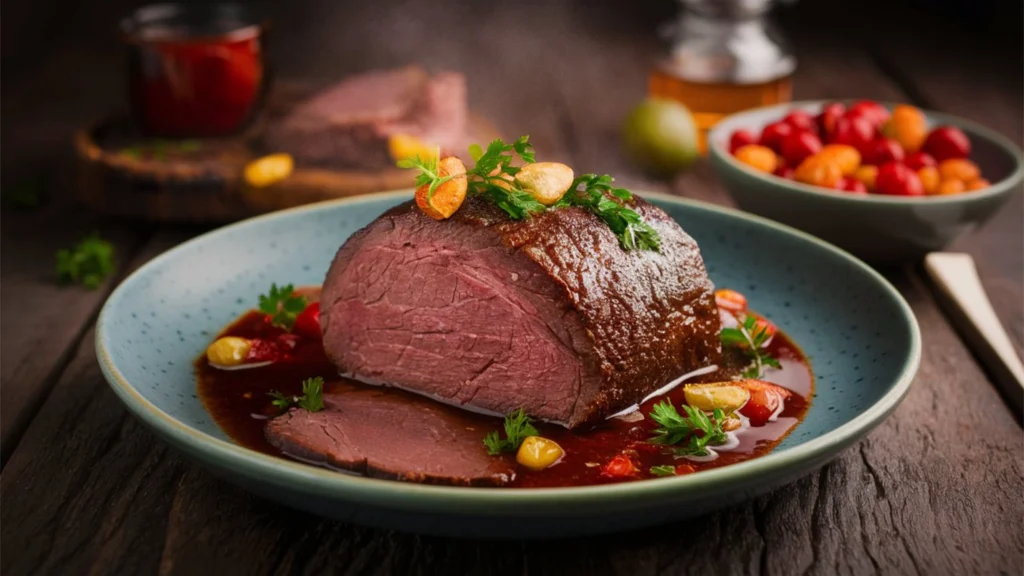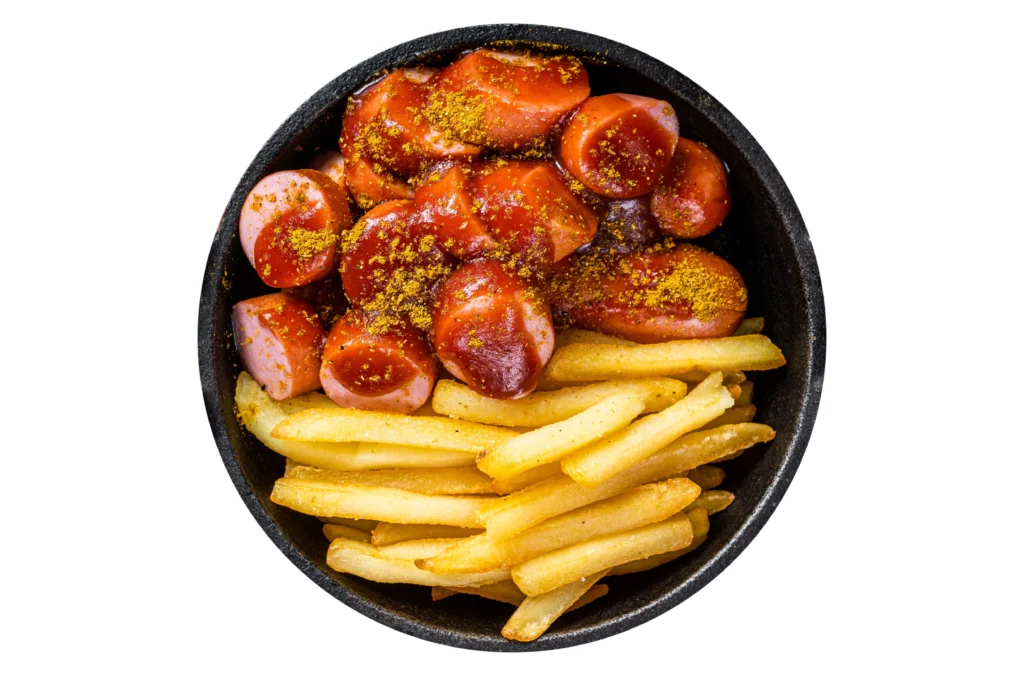Although sauerkraut and potatoes are the two foods that most people connect with German cuisine, there is much more to it than that. The German kitchen is very varied and takes its cues from many different culinary traditions, including Polish, Turkish, and Jewish.
Additionally, it has a strong regional component, with each state having its signature dishes. It’s amazing how different German food can be, from Maultaschen in the south to Lapskaus in the north.
Germany is a country rich in delicious food. Situated in the same latitude as Newfoundland amid western Europe, it enjoys long, balmy summer nights and chilly, icy winters. The Christian calendar maps out German social occasions; there’s always a celebration going on someplace, complete with homemade entertainment, gifts, and delectable food. The epitome of German friendliness and comfort is warm get-togethers over food and beverages.
German food- A synopsis
It’s common knowledge that German food is flavorless and uninspiring. Given that the early Germanic tribes generally consumed barley, wheat, dairy products, and different meats, this may have been the case. But as time passed, the German diet expanded in variety and ingredient list. These comprised fruits and vegetables and grapes used to make wine. Later on, possibly during the Roman era, more grains like rye were added. These days, people generally use rye and spelt, two extremely popular cereals, to manufacture a wide range of German breads.
German cuisine has evolved over the years but still draws from the nation’s rich history of utilizing seasonal ingredients. Examples are kale dishes prepared in the winter and red berry sauces prepared in the summer.
Features of German Cuisine
Despite this, many people in England and the United States may trace their lineage to Germany. These folks may not even know much about the German diet!
Meat and bread provide a sizable portion of traditional German cuisine, yet they are not all they consume. Though they aren’t strictly an old European staple, potatoes also appear significantly.
Germans tend to avoid spicy cuisine. They hardly ever add sauces other than meat gravies and use vinegar and pepper sparingly. German meals frequently feature breaded cutlets and slowly simmered meats.
Naturally, sausages are a staple of German cuisine. There are more varieties of sausage than you could ever imagine in any meat store in Germany.
Regarding drinks, German restaurants have a wide selection of beer, wine, and cider, but the country does not have a particularly strong tea or coffee culture.
If you were in a German restaurant right now, what would you order? You should sample a wide variety of German cuisine!
Regional Variations in German Cuisine
The topography—mountains, plains, and seas are all represented—and the closeness to waterways—where trade and transit have historically occurred—influence the regional cuisines. Preparing fish, meats, and vegetables using traditional methods like pickling, smoking, curing, or salting is still commonplace. Ancient cooking techniques can still be found in popular dishes like matjes (pickled herring), sauerkraut, and sauerbraten (roast beef cured in vinegar and wine).
German Foods with the Oldest Taste
It’s likely that German food was boring in prehistoric times. The growing season restricted the population to early varieties of wheat, barley, and pasture land for livestock, unlike the Mediterranean countries. For milk, butter, cheese, and occasionally meat products—typically provided during feasts—sheep, cows, and goats were utilized. Dill, celery, and parsley were the first spices employed in German cooking and are still used today. The Romans brought grapevines and fruit tree gardening. With the advancement of agricultural techniques, rye and oats were also incorporated. Because of its position and importance as a trading center, the regions surrounding Cologne were particularly abundant in savory foods and spices.
Modern German Cuisine
German cuisine, which incorporates a huge range of side dishes, nevertheless closely attracts notion from their illustrious past. Traditional and creative strategies are used to serve beef, beef, lamb, and wild game. Mustard, horseradish, and juniper berries are popular spices. But contemporary German cooks are starting to test with lighter fare, including traditional dishes.
German Food’s Boring Image
The notion of German delicacies as fatty and stodgy stems partly from the nation’s lack of diversity prior to the last two hundred years. Due to its close ties to France and Italy, Germany has benefited from their culinary capabilities and flavors, constantly incorporating a German twist.
German Restaurant Menu Items You Must Try
Let’s start with Spätzle, a dish native to Austria and Southern Germany. This dish of egg noodles is usually served with a hearty beef sauce. Once the dough for the noodles is finished, it is set over boiling water, and the noodles are sliced into droplets that quickly cook when submerged.
Are you prepared for dessert already? Apfelkuchen, or “apple cake,” is one of the most well-known desserts from Germany. There are several variations of this delectable dessert, such as the Versunkener Apfelkuchen, in which the apple bits are “sunken” into a dense, bouncy dough, and the Gedeckter Apfelkuchen, which is “covered” with oats and graham cracker crumbs.
.Next, continuing from Austria, we have the popular Strudel. This kind of turnover pie is usually cooked with apples and raisins. Using phylo, a paper-thin dough, and covering the entire thing with a small amount of butter before baking are crucial.
German cuisine served overseas as opposed to authentic
Given how many Germans have influenced cultures worldwide, it is not surprising that many people have only a passing familiarity with German cuisine. However, “passingly” is the crucial term. Over the years, as recipes have been passed down from generation to generation, many things have been lost in translation.
- The German pretzel, or Brezel, may be the most prominent dish. These enormous, curled dough knots are known in Germany and are typically served hot and accompanied by a fresh mustard dip and large rock salt flakes.
- Another item that appears somewhat differently abroad is a schnitzel. German and Austrian culinary authorities assert that veal, not pork or fowl, should be used to make a Wienerschnitzel or Schnitzel Wiener Art. It makes sense that individuals are sending their money overseas, considering that veal is typically twice as expensive as pork and fowl! It needs to be presented with a mild vinaigrette instead of the thick gravy that a lot of eateries offer.
- For many years, sauerkraut has been associated with German cuisine and even gave rise to an impolite slur during the war years. Since it was brought to Germany by Eastern traders in the Middle Ages, it isn’t strictly German. Even though sauerkraut is now widely available in grocery stores worldwide, few people still adhere to the original German recipe, which consists only of well-aged cabbage and salt without any additional ingredients.
- Lastly, Kartoffelsalat, also known as “potato salad,” is a popular meal at picnics and get-togethers across the US. However, it varies greatly from what is served at real German restaurants. German potatoes are boiled to make Kartoffelsalat; they are often smoother and more golden than potatoes from the Americas.
Three Unique German Cuisines
Even though some well-known German recipes have been exported that are not exactly like they were originally prepared, there are still a ton of new dishes to try in German-speaking nations. These are a few delicacies that are really difficult to locate elsewhere!
Weißwurst:


This veal and bacon sausage, which translates to “white sausage,” is closely linked to Southern Germany. It’s typically eaten for breakfast or lunch and is highly perishable. The manner it’s served is the most intriguing aspect—it’s carried to the table in the water that cooked it!
Sauerbraten:


This marinated roast is typically served with vinegar, much like the previously stated Wienerschnitzel. Vinegar and vinegar marinate the meat for several days, resulting in a flavorful sauce. Red cabbage and potatoes are served alongside the entire dish.
Currywurst:


After comparing the name to Weißwurst above, you may have realized it’s a sausage with a curry flavor! A currywurst isn’t especially gourmet in terms of food. This traditional German bratwurst is typically served with french fries and a ketchup-curry powder combo. But, it’s a much-loved feature of Berlin, and if you ever tell a Berliner that you’ve never had one, be prepared to be led straight to the closest Imbiss!
Conclusion
Has your curiosity with German cuisine increased due to learning about it? One great way international students may make the most of their study abroad experience in Germany is to explore German food. Through cultural immersion, sampling authentic German cuisine, and exploring the best places to eat, students may make enduring memories of their stay in this dynamic nation. Germany is well-known for its rich culinary heritage, globally recognized colleges, and educational system.


Leave a Reply